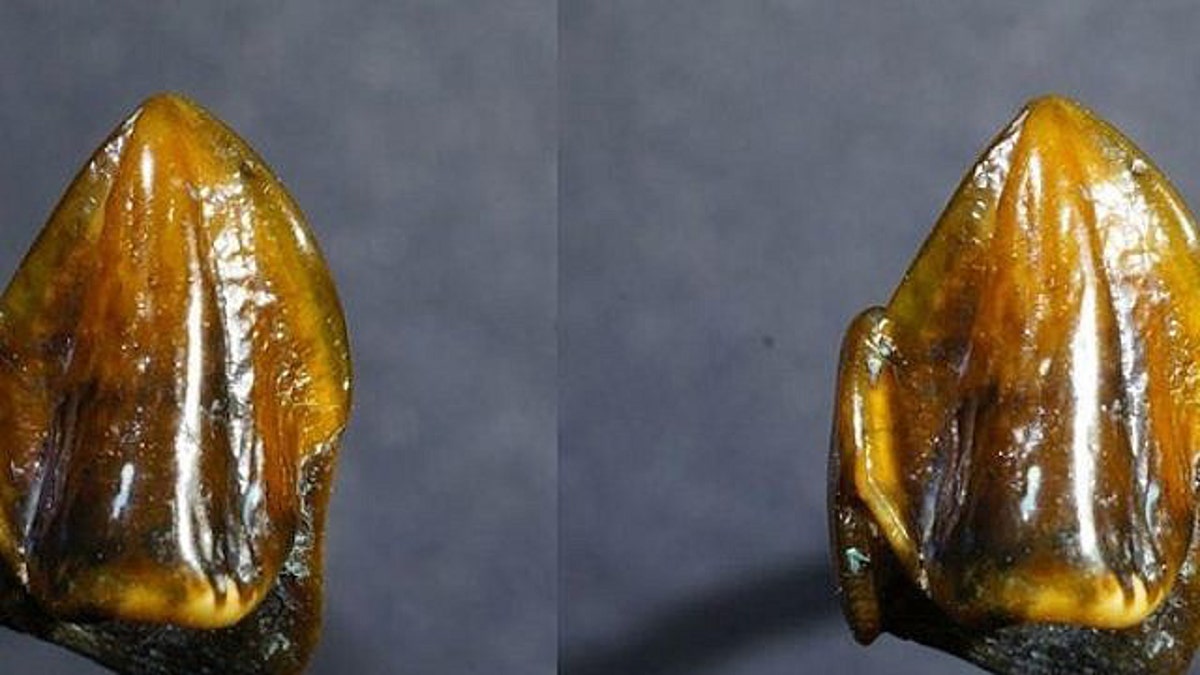
The fossilized remains of two teeth that were discovered last year could lead to a rewriting of human history. (Mainz Natural History Museum)
Dental remains discovered by German paleontologists who were sifting through gravel and sand in a former bed of the Rhine River could potentially lead to a “rewriting” of human history.
The fossilized remains of what are believed to be great ape teeth, an upper right first molar and an upper left canine, were found a little over a year ago near the town of Eppelsheim in southwestern Germany in sediments that date back 10 million years.
“It’s perfectly preserved. It actually looks like a new excellent tooth; however, it’s no longer white. It’s shining like amber,” Herbert Lutz, head of the excavation team and deputy museum director at the Mainz Natural History Museum, told USA Today.
Lutz said that the discovery is groundbreaking for its potential to alter our understanding of how humans developed and migrated in prehistoric times.
“I don’t want to over-dramatize it, but I would hypothesize that we shall have to start rewriting the history of mankind after today,” Mainz Mayor Michael Ebling told reporters during a press conference this week announcing the discovery, reports the Times of Israel.
THE FASCINATING SEX LIFE OF JONATHAN, THE 186-YEAR-OLD TORTOISE
According to researchers, our current understanding is that hominins, our extinct human ancestors, left Africa about 120,000 years ago. The discovered remains are significantly older.
“We have comparable finds only in East Africa…but they are only 2, 3, 4 or 5 million years old, and Eppelsheim is almost 10,” said Matz. “So the question is: What has happened? We don’t know where this great ape came from. We do not have comparable finds from southern Europe.”
Although the scientist made the discovery in September 2016, they were so confused by what they’d found they waited until this month to release a report about it.
As of now, it is not known where the teeth fit in humankind’s family tree. However, Lutz and his team of researchers are only just beginning to fully examine their unique find.
“It’s a complete mystery where this individual came from, and why nobody’s ever found a tooth like this somewhere before," Lutz said in an interview with ResearchGate, where the report was published.








































